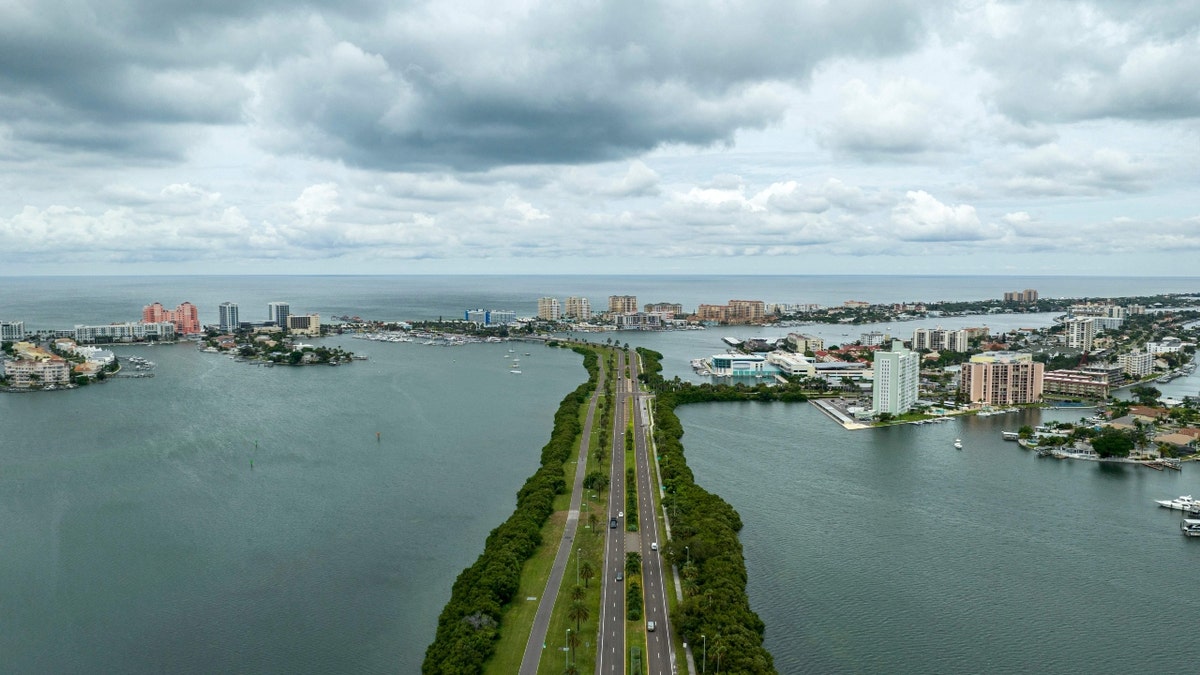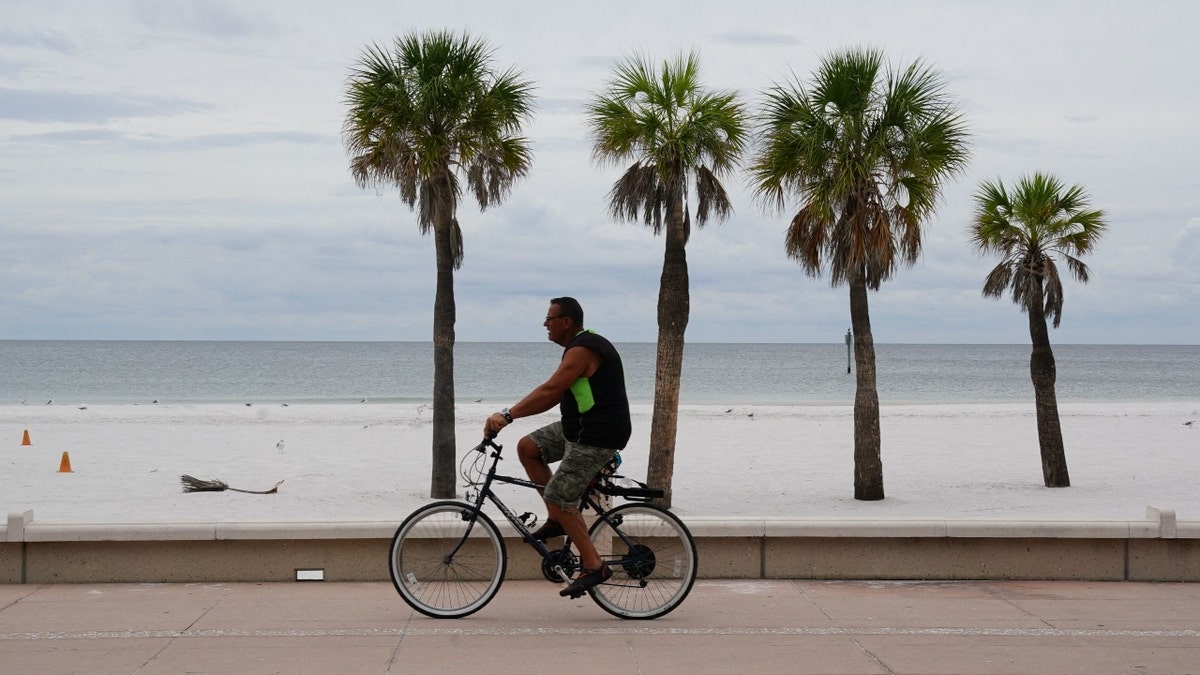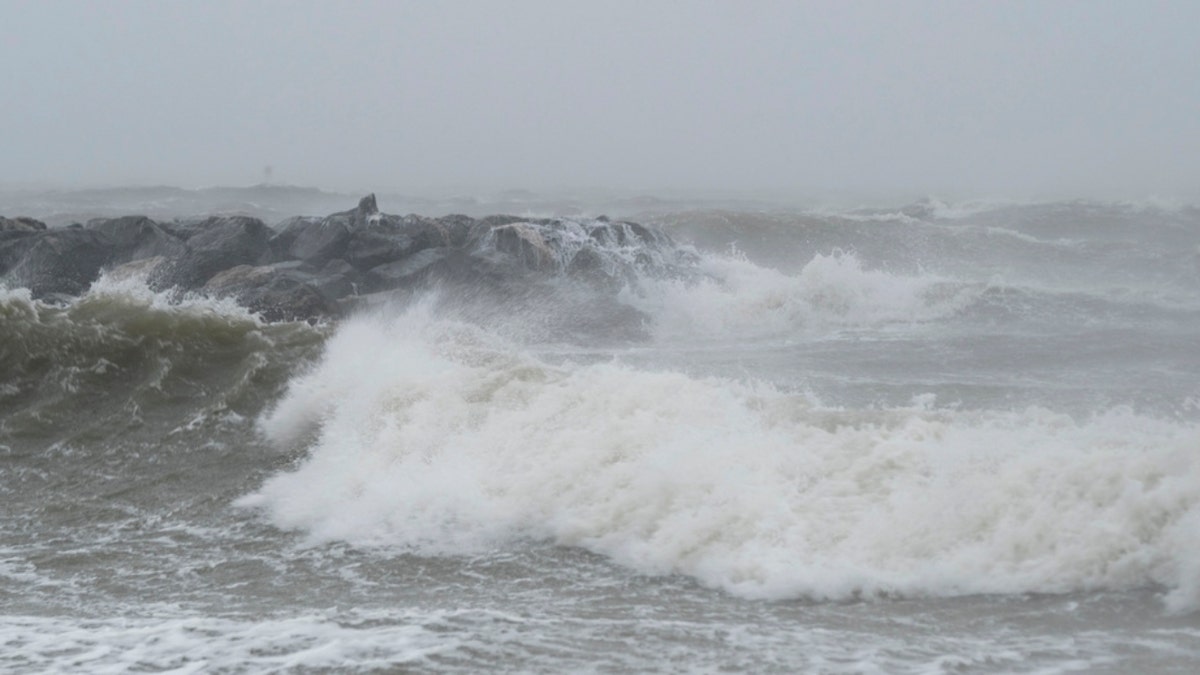Lightning strikes airplane on tarmac in shocking video
An American Eagle plane was struck by lightning while on the tarmac at the Bill and Hillary Clinton National Airport in Little Rock, Arkansas. The plane was able to taxi to the gate normally and checked for damage. See the moment caught on camera!
A meteotsunami was recorded in Florida last week.
Clearwater Beach chairs were toppled last Wednesday, and the National Weather Service issued multiple special marine warnings throughout the day and into the evening.
The agency shared a photo of the incoming storm at around 9:28 a.m. ET.
Water levels peaked at around 4 feet, weather officials told The Associated Press. But what is a meteotsunami?
4 DEAD, 3 REMAIN MISSING FOLLOWING CHINESE LANDSLIDES

An aerial view of Clearwater Beach as Hurricane Ian approaches in Clearwater, Florida, on Sept. 27, 2022. (Photo by RICARDO ARDUENGO/AFP via Getty Images)
Meteotsunamis are large waves caused by storms, according to the National Oceanic and Atmospheric Administration.
While tsunamis are triggered by seismic activity, meteotsunamis are driven by air-pressure disturbances often associated with fast-moving weather events, including severe thunderstorms and squalls.
The storm creates a wave that moves towards the shore and is amplified by a shallow continental shelf and inlet, bay or another coastal feature.

A man rides a bike along Clearwater Beach ahead of Hurricane Ian on Sept. 27, 2022, in Clearwater, Florida. (Photo by BRYAN R. SMITH/AFP via Getty Images)
They have been observed to reach heights of 6 feet or even more.
Identifying such events is challenging, the administration notes, because its characteristics are nearly indistinguishable from a seismic tsunami.
ROYAL CARIBBEAN CRUISE SHIP PASSENGERS SCRAMBLE AS FREAK STORM TOSSES FURNITURE: VIDEO

A still image from Florida's incoming storm last week. (NWS Tampa Bay/Twitter)
Meteotsunamis can be confused with wind-driven storm surges or a seiche. Seiches are standing waves with longer periods of water-level oscillations, whereas meteotsunamis are progressive waves that are limited to the tsunami frequency band of wave periods. Sometimes they can occur simultaneously, and seiches are usually limited to partially or fully enclosed basins like Lake Erie.
These uncertainties make it difficult to predict a meteotsunami and warn the public of a potential event, but scientists have identified atmospheric conditions that are likely to generate a meteotsunami and continue to work on ways to forecast them.

Waves crash at Outlook Beach in Hampton, Virginia, Sept. 30, 2022. Storms with strong gusting winds sometimes cause a phenomenon known as a meteotsunami, in which the winds push on the water and increase the wave height near the coast before it eventually crashes onto shore. (Billy Schuerman/The Virginian-Pilot via AP)
This Florida meteotsunami was around 2.5 feet higher than the forecast wave height.
CLICK HERE TO GET THE FOX NEWS APP
The weather service does not issue specific advisories for meteotsunamis.
They occur around the world, including the Great Lakes, Gulf of Mexico, Atlantic Coast and the Mediterranean and Adriatic Seas.
The Associated Press contributed to this report.






















